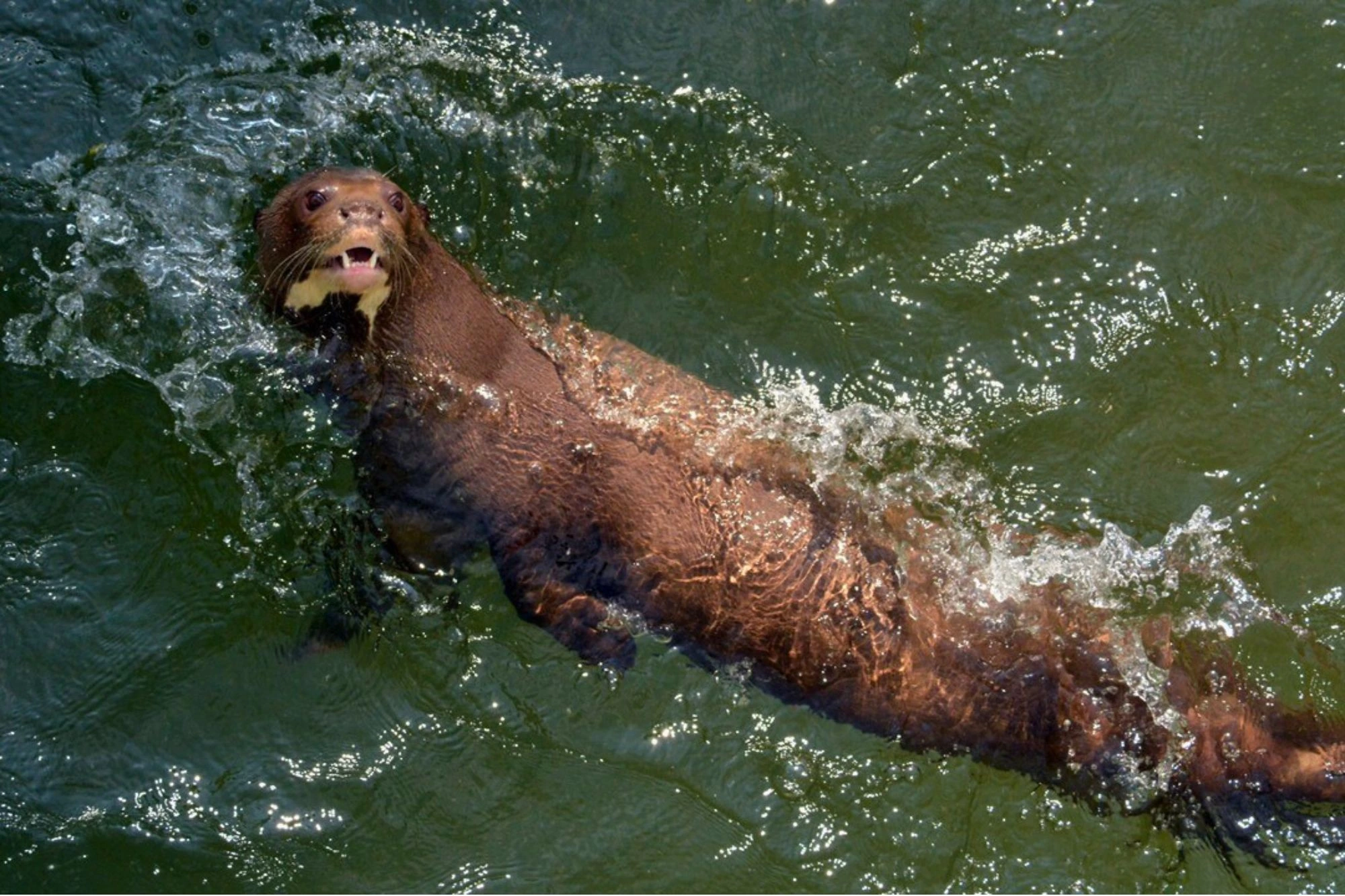The giant otter, a species once native to Argentina but missing for decades, has now returned to the country. The reintroduction program involves zoo-born individuals and their descendants, most of whom came from European zoos. Several institutions participating in the European breeding program for giant otters, maintained by the European Association of Zoos and Aquaria (EAZA), have contributed to this effort, including the Budapest Zoo.

In northeastern Argentina, the province of Corrientes is home to Iberá, a wetland ecosystem covering tens of thousands of square kilometers. A large portion of the area is protected, including the Iberá National Park.
Although the region’s wildlife is diverse, several native species have become rare due to human activity, and some even disappeared entirely from the area. Local conservation experts have worked extensively to restore the region’s fauna, including the reintroduction of species that had vanished. The first giant anteaters were released in Iberá in 2007; today, their number exceeds 90. Pampas deer were reintroduced starting in 2009, and their population has also grown to over 100. Work is ongoing to reintroduce jaguars, and over the past ten years, white-lipped peccaries and tapirs have also been brought back to the area. More than a hundred years after they disappeared, green-winged macaws have also returned to Iberá.
Most recently, giant otters have come back to the waters of Iberá, and our Zoo played a role in this achievement. That is why we are pleased to share a four-part video series created by our Argentine partners, presenting the story of the giant otter reintroduction. For those who understand English or Spanish, the subtitles make it easy to follow the content (although the images are quite expressive even without captions). We also provide a brief summary in Hungarian.
The first video explains that when the work with giant otters began eight years ago, one major challenge was the absence of wild giant otters in Argentina at that time. Moreover, the species had never been kept in captivity in the country. As a first step, the team contacted the European Association of Zoos and Aquaria, which coordinates a breeding program for the conservation of the species.
So far, giant otters have arrived in Iberá from six zoos, including ours. In fact, one of the first two otters introduced into the area was a female named Alondra, who was transported from Budapest to Argentina in 2019. In addition to Budapest, the reintroduction project has involved the zoos of Eskilstuna (Sweden), Givskud (Denmark), Halle (Germany), Doué-la-Fontaine (France), and Madrid (Spain), as well as the Los Angeles Zoo in the United States. Meanwhile, a zoo in Buenos Aires, Argentina, has also started housing giant otters.
The next step in preparing for the reintroduction was to work out the various technical details. In this process, the conservation specialists working in Iberá received support from their Brazilian colleagues involved in the “Projeto Ariranhas” program. These experts had already gained substantial experience in the research and protection of giant otters.
To reintroduce the giant otters, Argentine conservationists had to overcome several challenges. They needed to develop effective methods for transporting the animals, carrying out veterinary procedures and quarantine operations, as well as for caring for and monitoring the otters. In addition, they had to design adaptation enclosures where the animals could become familiar with the local environmental conditions before being released into the wild.
In the final video, we see the moment when the giant otters are released from the adaptation enclosure—an area where they had been getting used to the local conditions—into the wild. They swim off happily into the natural waters at the heart of Iberá National Park, which is actually a wide, lake-like section of the Paraná River.
The video also reveals that wild giant otters had completely disappeared from Argentina in recent decades. In Iberá, they were last seen around fifty years ago. Although a family of giant otters was observed in the neighboring province of Misiones in 1986, the species has since vanished from nearly all regions of Argentina where it once lived—apart from a few isolated sightings of solitary individuals. The reintroduction is therefore a milestone not only for Iberá or the province of Corrientes, but for all of Argentina, as the species is now once again present in the country.
The giant otter is native to several South American countries and is classified as an endangered species throughout its range. At Budapest Zoo, we began working with giant otters in 2014—more than a decade ago—and their habitat was inaugurated that same year (though the facility underwent major renovation just last year).
Originally, in 2014, we had three female otters. One of them, Alondra, was transferred to Argentina in 2019 to take part in the reintroduction program. Another female, Cora, moved to Madrid Zoo that same year. In exchange, a male named Madidi arrived in Budapest from the Spanish capital to join Cumana, the female who remained here. The two bonded instantly, and over the years they have delighted us with several litters of pups.
With their acrobatic swimming skills and playful movements on land, our giant otters are among our visitors’ favorites. As part of our “Be There!” experience program series, we hold a public feeding session with them every day at 13:30.